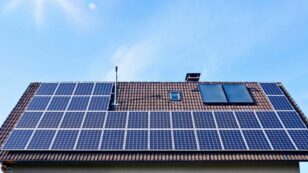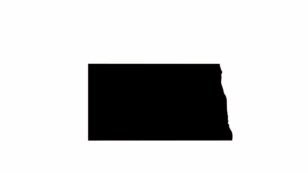 Reviews
Reviews
North Dakota Solar Incentives (Rebates, Tax Credits & More in 2024)
In this guide to solar incentives in ND and how to save on your solar conversion, you’ll learn:
- What solar benefit programs are available in North Dakota?
- Do the solar perks in North Dakota help reduce the cost of going solar in the area?
- Which incentives in North Dakota are the most valuable and important to take?
Each product and or company featured here has been independently selected by the writer. You can learn more about our review methodology here. If you make a purchase using the links included, we may earn commission.
Do North Dakota Solar Incentives Make It Affordable for Homeowners to Go Solar?
Yes, the local solar benefit programs make adopting solar far more affordable and accessible to residents.
The typical up-front cost to convert to solar power in North Dakota is $34,540. Despite the average cost per watt being well below the national average — $3.14 as compared to $3.33in most other states — the total conversion cost is above average. This is due to the larger system size required — 11 kilowatts (kW) — to offset high energy bills.
According to the Solar Energy Industries Association (SEIA), the state ranks dead last in the country in terms of solar adoption rate.1 However, there are some decent incentive programs available to help out with the up-front conversion cost.
This is likely thanks to the state’s Renewable Portfolio Standard (RPS). Although it’s voluntary, it still motivates incentives and solar rebate programs.

Lightspring Solar

Regional Service
Average cost
Pros
- Locally owned and operated
- Offers products from leading manufacturers
- Custom system designs
- Representatives are experts on local policies
Cons
- Relatively young company
- Limited warranty coverage
- No leases or PPAs

GenPro Energy Solutions

Regional Service
Average cost
Pros
- NABCEP-certified technicians
- Competitive pricing
- Multitude of products and services
Cons
- No leases or PPAs
- Limited warranty coverage

REAL Solar
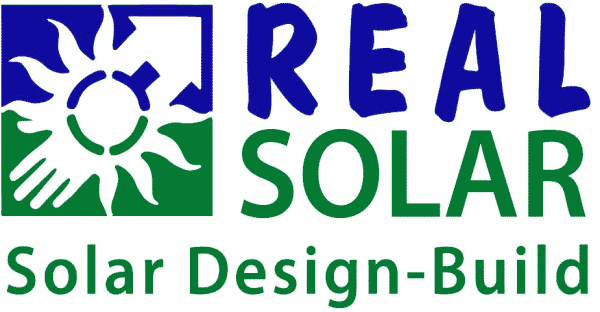
Regional Service
Average cost
Pros
- Outstanding customer service
- Offers products from leading manufacturers
- NABCEP-certified technicians
- Representatives are experts on local policies
Cons
- Limited service area
- No leases or PPAs
- Slightly limited service offerings
- Limited warranty coverage
Overall, the solar perks in the state can save you thousands of dollars on your solar panel system prices and help maximize your long-term savings on utility bills. We’ll include all of the statewide perks in the table below, along with a description of each and an estimated savings you’ll see when you take advantage of them.
| Solar Incentives in North Dakota | Incentive Type | Description | Occurrence | Estimated Dollar Amount You Can Receive |
| Federal Solar Investment Tax Credit (ITC) | Federal | This credit is for 30% of your system costs, which gets applied to your income tax liability for the year you install your photovoltaic (PV) system | One-time: The credit is assessed once when you file your taxes after solar installation but unused credit rolls over for up to five years | $10,362 on average |
| Renewable Energy Property Tax Exemption | State | This perk prevents your property taxes from increasing after conversion, even though your panels make your home more valuable | Ongoing: You’ll see savings on your property tax bills each year after installation. However, the state caps the exemption at five years. | $1,623, on average, although the amount varies based on system value |
| Net Metering | Local | Credits you for excess generation and power you send to the grid. Credits reduce your future electric bills to save you money. | Always in Effect: You’ll earn credits continuously for as long as your panels generate electricity | Varies based on your system size, panel efficiency, monthly energy needs and more |
| Local Incentives | Local | Perks and benefit programs offered by local utility providers and cities | Varies based on the specific perk | Varies based on the program, your system size and more |
What Do North Dakotans Need to Know About the Federal Solar Tax Credit?
The federal income tax credit (ITC) is a massive tax credit offered by the federal government to all U.S. taxpayers. It provides a credit of 30% of your entire system cost — including panels, solar batteries, inverters and the labor to install everything — to your income tax burden.
When you go to file your taxes, the credit amount gets deducted from your tax liability, which means if you owe money to the Internal Revenue Service (IRS), your solar conversion costs will reduce the payment you have to make.
This perk has been offered since 2005. The credit rate dropped to 26% in 2022, but the Inflation Reduction Act (IRA) signed in August of that year bumped the credit back up to 30% — including retroactively for systems installed between January and August. It also extended the credit for ten years. The new rate schedule is as follows:
- 30% for systems installed through 2032
- 26% for systems installed in 2033
- 22% for systems installed in 2034
- No credit for systems installed in 2035 or beyond
Given the average local system price of $34,540, you can expect your credit value to sit around $10,362.
How to Claim the Federal ITC in North Dakota
You can follow the steps below to file for the federal credit. The application process is quick and painless, so you should be able to complete it in under ten minutes.
- Step 1: Complete the solar conversion process
- Step 2: Print out IRS form 5695 when you’re ready to file your taxes
- Step 3: Fill out the form using information about your home — or the site where your panels will be installed — and the contact information for your installer. You’ll also need some basic information about your system, like the total cost and the size.
- Step 4: File the form alongside your taxes
If you use a tax filing software or program to file, you should get prompts automatically about any renewable energy system you have. Just answer the related questions, and you can skip the above steps.
EcoWatch’s Opinion on the Federal ITC in North Dakota
In our opinion, the federal credit is the best solar incentive available in your area. Not only does it take just a few minutes to apply for, but it also provides an average effective savings of nearly $10,400. This perk is especially useful in areas like The Peace Garden State, where statewide incentives aren’t as plentiful as they are in other states and there is no state tax credit.
It’s important to keep in mind that while we think this is the best perk available in the state, it won’t be equally beneficial to all residents. Since this is a tax credit, you’ll only have access to this perk if you owe money on your income taxes. You’ll need to owe around $2,072 per year for five years following your installation to be able to take the full credit.
Watch Below: Learn How You Can Profit Off Of the Extra Energy Your Solar Panels Produce
What You Should Know About the Exemption for Property Tax in North Dakota
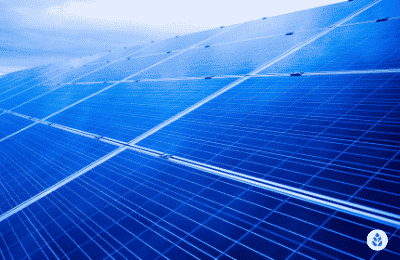
The tax exemption for property taxes prevents this increase from occurring, which means your taxes won’t be negatively affected by solar adoption.
It’s hard to estimate the exact savings you’ll see from this benefit program, in part because your panels will depreciate over time. Excluding depreciation, though, you’re looking at the state property tax rate of 0.94% on an average solar power system value of $34,540.
That’s an annual savings of approximately $324. This perk only lasts for five years in the state, which leaves a total savings of around $1,623.
How to Claim the Property Tax Exemption in North Dakota
The exemption is claimed by filing the state’s Application of Exemption for Solar, Wind, and Geothermal Devices with the county your home is located in:
Step 1: Download the form here.
Step 2: Complete the form once your system has been installed.
Step 3: Submit the form to the office of the Director of Tax Equalization in your county.
EcoWatch’s Opinion on the Exemption for Property Taxes in North Dakota
Property tax exemptions for solar energy equipment are a common perk throughout the country, and it’s one we love to see. It’s a great way to reduce the financial burden of converting to solar and incentivize the adoption of clean energy.
We do wish there wasn’t a five-year limit on the exemption. Still, we think this is an excellent perk to have access to, and it provides decent savings.
Net Metering in North Dakota
Net metering — also called net energy metering or NEM — is a policy that tracks the energy your panels generate and send to the electric grid. It also credits you for that excess power production and lets you put those credits toward reducing utility bills and effective electricity rates in the future.
The state mandates net energy metering for all investor-owned utilities (IOUs), including Montana-Dakota Utilities Company, Northern States Power Company and Otter Tail Power Company.
Customers of these providers are guaranteed access to NEM, while customers of municipal utilities and electric cooperatives could but are not guaranteed to have access.
There is no specific credit rate required in the state, so most companies offer an avoided-cost rate, which is below the retail value for electricity. This isn’t ideal, but it’s still helpful for reducing panel payback period, bumping up long-term energy savings and getting the most out of your panels.
We should mention that NEM is decreasing and disappearing in a handful of states as solar becomes more popular and more strain is put on the grid. It’s possible that net energy metering will disappear or get capped in North Dakota in the future.
How to Enroll in Net Metering in North Dakota
There is a simple application process for NEM currently, although most solar customers who choose reliable installers will be able to avoid doing it themselves as many installers will complete the application process. You can follow the steps below to make sure you take advantage of this perk.
- Step 1: Call your electricity provider and ask them to confirm if you have a bidirectional meter installed. Most companies have already upgraded to these meters to allow for interconnection, but you can usually get one installed at no cost to you if you don’t already have one.
- Step 2: Choose a solar installer that services your area. We suggest finding one that will complete the NEM application for you, as this is often one sign of a reputable installation company.
- Step 3: Get your solar PV system installed.
- Step 4: Check your energy bills for a few months following installation. You should see credits accruing as long as your production is outpacing your consumption.
EcoWatch’s Opinion on the Net Metering Program in North Dakota
Net energy metering provides a huge financial benefit to solar customers in your area. There are a few reasons why we believe this perk is one of the best in the state. These include:
- A decreased panel payback period, meaning you get the money you spend on your system back more quickly
- Increased energy savings over time — an average of just over $25,758
- Decreased carbon footprint and reliance on fossil fuels
- Reductions to your effective energy consumption, which is crucial given the above-average energy demands in the area3
Best of all, NEM enrollment is painless for most homeowners, as many installers will handle the application process.
Local Solar Incentives in North Dakota
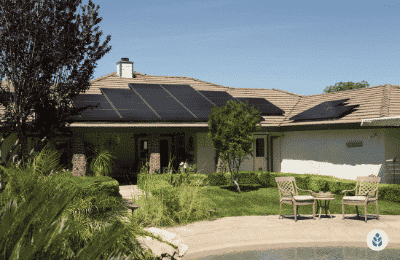
- Xcel Energy Residential Energy Efficiency Rebate Program: Customers of Xcel Energy can get rebates for efficiency upgrades, like LED lighting, smart thermostats and efficient heating and cooling systems like geothermal equipment.
- Otter Tail Power Company Energy Efficiency Rebate Program: Customers of Otter Tail can get rebates of between $25 and $1,400 for installing new insulation, heat pumps, efficient lighting options and more.
You can always call your power provider to see if there are rebates available to you as well. You can also check the Database of State Incentives for Renewables & Efficiency (DSIRE) for available incentives.
Which Tax Incentives Are The Best In North Dakota?
Above, we’ve included information on all of the solar perks available to you. Not all of these incentives are equally beneficial, so you may want to choose the ones that provide the most bang for your buck. We’ll include a quick list of what we believe are the best solar benefit programs in ND below.
The Federal Tax Credit
In our opinion, the federal credit is the single most crucial benefit program to take as a North Dakotan. It provides a potential value averaging around $10,400, and it takes just a few minutes to apply. This credit is especially helpful because there are few other state incentives available and because it’s available to all residents without restrictions.
Net Energy Metering
Once you’ve taken advantage of the federal credit, we recommend you focus your efforts on ensuring you get access to net energy metering. This perk is huge for North Dakotans because it helps offset the above-average electricity bills in the area and because it helps bring down the above-average conversion costs.
Not only does it save you more over time and help pay off your system, but it also requires minimal effort on your part — and often no effort at all — to apply.
What’s The Near-Term Outlook For More Incentives In North Dakota?
As of right now, there are no foreseeable changes that will occur to solar perks in your area that will make them more or less valuable or accessible.
If there is a change, we’d expect it to be to the net energy metering policy. Many states are seeing NEM policies decline or be discontinued as more residents adopt solar and put more strain on the power grid. It’s possible that this will happen in The Peace Garden State as well.
However, given the slow rate of solar adoption in the area, we expect NEM to stick around for some time.
The cost information presented in this article is derived from a comprehensive analysis, incorporating data from multiple industry sources. The average cost per watt per state was calculated based on figures from Consumer Affairs, Energy Sage, and Berkeley Lab’s Electricity Markets & Policy Department. Additionally, monthly energy consumption and the average monthly cost of electricity were sourced from the U.S. Energy Information Administration, ensuring a well-rounded and accurate representation of the information presented.
FAQs: North Dakota Solar Incentives and Savings
We’ll answer some questions we see most often from North Dakota residents about the incentive programs available for solar below.
Solar Renewable Energy Certificates (SRECs) are credits you can earn for producing solar energy, even if you consume that electricity in your home. Unlike net energy metering credits, they accrue for all production and can be sold for a profit to electric utility companies looking to comply with RPS goals.
Unfortunately, there is currently no active SREC market in ND, so these credits are unavailable to residents.
There are no plans in place to increase local incentives in the next two years. Since the state’s RPS goal is currently voluntary, we don’t expect any significant positive changes to incentive programs unless a mandatory standard is set.
The Inflation Reduction Act (IRA) changed two things for energy efficiency upgrades. First, it bumped up the tax credit available for some electric vehicles (EVs). The maximum credit is now $7,500, and there are new restrictions on which vehicles qualify for the perk.
The IRA also pushed back the expiration date for the federal credit by ten years. It also increased the credit for 2022 solar panel installations from 26% to 30% and extended that 30% credit rate to 2033.
There is nothing to suggest that incentive programs currently available in the state will become less appealing or go away entirely in the next two years.
If a change were to occur, though, we’d expect that net energy metering would no longer be available, or a cap would be placed on the number of participants in the program. The likelihood is that this will not happen in the next two years, but it could as adoption picks up in the area.
Unfortunately, no, there is no sales tax exemption for solar PV systems in your area. That means you’ll have to pay the standard state sales tax when purchasing your solar energy system.
Top Solar Installers in North Dakota Cities
Comparing authorized solar partners
-
- Locally owned and operated
- Offers products from leading manufacturers
- Custom system designs
- Representatives are experts on local policies
- Relatively young company
- Limited warranty coverage
- No leases or PPAs
Not RatedOutstanding Regional Installer
Having trouble deciding? Click below and use our process to receive multiple quotes instead:

 233k
233k  41k
41k  Subscribe
Subscribe 


